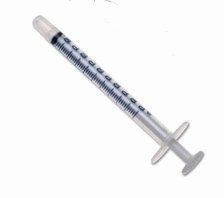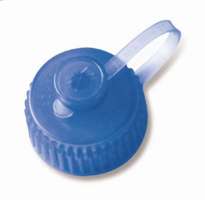|
ADMINISTRATION OF
CALCITRIOL
Back in 2001, my veterinarian's initial reaction to
using calcitriol to treat my Scooter Cat's chronic
renal disease was negative - she believed that
calcitriol was expensive and that subsequent
monitoring was very expensive and that calcitriol
treatment frequently resulted in hypercalcemia.
Fortunately for my Scooter Cat, a call from my vet's
old pathology professor, Dr. Larry Nagode, helped
convince my vet that her understanding of calcitriol
was dated, that the frequency of hypercalcemia using
the new micro-compounded doses of calcitriol was nil,
and that it was worth a try. The actual first year cost for Scooter's calcitriol treatment was a $120 PTH/iCA test and an $80 prescription for a highly concentrated liquid oral suspension of calcitriol. Subsequent monitoring was already part of the every 3 month testing done for Scooter's renal condition which included serum calcium. Incremental costs for years 2 & 3 ran about $100 a year. Calcitriol's effect on Scooter was immediate, improving his energy and appetite almost instantly. My vet now routinely recommends calcitriol as soon as chronic renal disease is diagnosed. Overview Much of this web site is devoted to material to help vets and pet owners decide if calcitriol is an appropriate treatment for their patients and pets. This section, however, assumes that the decision to go ahead with calcitriol has been made and addresses the mechanics of actually starting calcitriol therapy. This is written for both treating veterinarians and cat owners. It is assumed that most decisions will be made jointly by owner and veterinarian. The information here will also help both veterinarians and cat owners estimate the cost of treatment. In brief, the steps involved include:
|
|
1. Controlling Phosphorus. Serum phosphorus values must be less than 6 mg/dl to begin calcitriol therapy. The Phosphorus Binders page of the CRF Supplies site covers aluminum hydroxide binders in some detail, including products, vendors and Dr. Larry Nagode's protocol for dosing aluminum hydroxide binders. If an animal requires phosphorus binders to control phosphorus below 6, binders should be continued during calcitriol administration. IMPORTANT: Epakitin and other calcium-based binders are not appropriate for dogs and cats that are being treated with calcitriol or are candidates for treatment with calcitriol. Calcium-based binders increase the risk of hypercalcemia. |
|
2. PTH/ica Test. A parathyroid hormone (PTH) / ionized calcium (ICa) test is useful in determining whether PTH is elevated and whether hypercalcemia is a concern and deciding on the appropriate dose of calcitriol.. It's an expensive test, however, and not always necessary. For cats in early CRF with normal calcium values, the test is desirable rather than necessary. For cats in the later stages of the disease or for cats with elevated calcium, a PTH/iCA is strongly recommended prior to calcitriol administration. The Michigan State University (MSU) College of Veterinary Medicine Diagnostic Center for Population and Animal Health (DCPAH) does a Intact Parathyroid Hormone and Ionized Calcium test for $28. With the sample preparation and shipping costs (refrigerate or freeze sample prior to shipment - shipment on ice via overnight courier - must arrive below 60 F) and your vet's profit, expect to pay $60-$100. Other commercial labs such as IDEXX and Antech can also do the test (IDEXX actually reships the sample to MSU) – expect your vet to charge $130-$150. |
|
3. Base daily dose. The treating veterinarian will decide the animal's daily dose of calcitriol in nanograms per kilogram (ng/kg) of body weight. Drs. Nagode and Chew recommend a starting dose of 2.5-3.5 ng/kg for most cases. Animals in early CRF with low creatinine values and normal serum calcium are usually prescribed the minimum dose. Animals in later stages of the disease with elevated PTH will likely be prescribed doses at or near the top end of the 2.5-3.5 ng/kg range. In a few cases where PTH is significantly elevated, the starting dose may be higher than 3.5 ng.
Dr Larry Nagode, 0331 Goss Laboratory, 1925 Coffey
Rd, Columbus, OH 43210
Here's a spreadsheet that will help calculate doses and help you calculate costs and compare vendors. The decisions on daily versus intermittent (every 3.5 days) dosing (see #4 below) and fasting (see #5 below) are linked to the medical aspects of the base daily dose decision and should be made at the same time. |
|
4. Daily versus Intermittent Dosing. If the pet in question has calcium issues (consistent serum calcium reading close to the top of the normal range and/or elevated, ionized calcium readings above normal, etc.), Dr. Nagode strongly recommended that every 3.5 day intermittent dosing be used (see the Fasting section below). If the foregoing is not the case, the decision to go daily or intermittent may be influenced by lifestyle, convenience and financial aspects.
|
|
5. Fasting. The following was derived from four 2008 emails from Dr. Nagode. Dr. Nagode is quoted extensively below. Dr. Nagode stresses that all decisions on dosing and fasting should be taken in consultation with the treating veterinarian. The information below is a guideline to help in those dosing and fasting decisions. In general, Dr. Nagode believes "… when calcium
levels are at or near top of the normal range, fasting
is indicated no matter whether dosing daily or
intermittently (each 3.5 days) with the first option
pursued when calcium runs high being use of
intermittent [every 3.5 days] dosing which is much
more powerful versus hypercalcemia than fasting the
daily dosed patient." Dr. Nagode currently
recommends two dosing schemes – daily and every 3.5
days. He no longer endorses "every other day" (EOD)
dosing.
|
||||||||||||||||
|
6. Capsules or Liquid Suspension. Calcitriol is available in two forms - capsules and a liquid suspension which requires an oral syringe to measure and administer doses.
|
|
|
|
7. Purchasing Calcitriol from a Vendor. Calcitriol must be micro-compounded into doses fit for animal use. Calcitriol is usually purchased from a pharmacy that does veterinary compounding. A prescription from your veterinarian is required. Some veterinary compounding pharmacies will only sell directly to veterinarians. This allows veterinarians to add an additional charge for their profit. If you take your vet's prescription and deal with a veterinary compounding pharmacy that sells directly to pet owners, the price should be lower, often considerably lower. Here is a list of Veterinary Compounding Pharmacies that will sell directly to pet owners and compound calcitriol. Compounded calcitriol for animal use is available from many compounding pharmacies in the US. Since Franck's has closed, Triad is only one that Dr. Nagode personally recommends because they are the only two that he has personal knowledge of their compounding procedures. If you are thinking about using another provider, Dr. Nagode suggests that your vet or your should " ... check in with the proposed providing pharmacy" simply inquiring "what is done to protect versus oxidative injury?". If the question is met with a puzzled response or the statement that 'we just dilute a stock solution from wholesaler', then a request that they look into the matter should be made--and if they lack interest in so doing, an alternative provider should be sought." "Calcitriol when compounded for veterinary use needs to have stabilizing agents included to protect its three alcoholic groups from oxidation by the polyunsaturated oils used to dilute the calcitriol. Veterinarians are encouraged to use one of the more experienced compounding pharmacies to ensure stable appropriate dosages." Please note that many compounding pharmacies purchase calcitriol liquid calcitriol suspensions from compounding wholesalers such as PCAA and dilute as needed. The stabilizing agents referred to above may already have been added to the concentrated suspension. Still, the selling pharmacy should be aware of this and/or willing to research the issue. If they don't understand the concern about protecting the alcoholic groups from oxidation, best to buy elsewhere. (Do try to speak to a compounding pharmacist or technician rather than a pharmacy clerk..) |
|
8. Administering Calcitriol. Daily. If you can, it's best to administer calcitriol at bedtime. Calcitriol should be given separately from other meds and should not be administered with food. You can use either pre-measured capsules purchased from a vendor or an oral suspension. The oral suspension can be administered via an oral syringe or you may place the appropriate dose in an empty gel cap and administer it that way. Intermittent (Every 3.5 days). Every 3.5 days does mean every 84 hours. During the three years Scooter received calcitriol, he got a dose Tuesday evening (after we picked up his food for an appropriate pre-fast) and 84 hours later got a dose on Saturday morning, after we had picked up his food Friday night for a pre-fast.) Because of the larger doses involved in intermittent dosing, pre and post fasts are critical. See the directions above. Other Dosing Schemes (Every 3 days). I asked Dr. Nagode whether it was possible to use an every 3 days and then 4 days scheme for intermittent dosing. His answer was no, that a dose of calcitriol would not be effective much beyond 3.5 days. He did, however, say that you could use an every 3 day scheme for calcitriol. This would allow folks to dose at the same time every 3rd night, much easier for the required pre and post fasts. |
|
9. Follow-up Testing and
Monitoring. Early experimentation using
much higher doses of calcitriol to treat renal disease
in animals led to many cases of hypercalcemia.
Consequently, vets did a lot of testing to ensure the
current microcompounded doses now used were
safe. Now that the relatively safety of properly
administered calcitriol has been established, the
follow-up testing under the protocol
of Drs. Nagode and Chew is much reduced.
|
 Baxa Exacta-Med
Syringe
Baxa Exacta-Med
Syringe  Adapta-Cap
Adapta-Cap